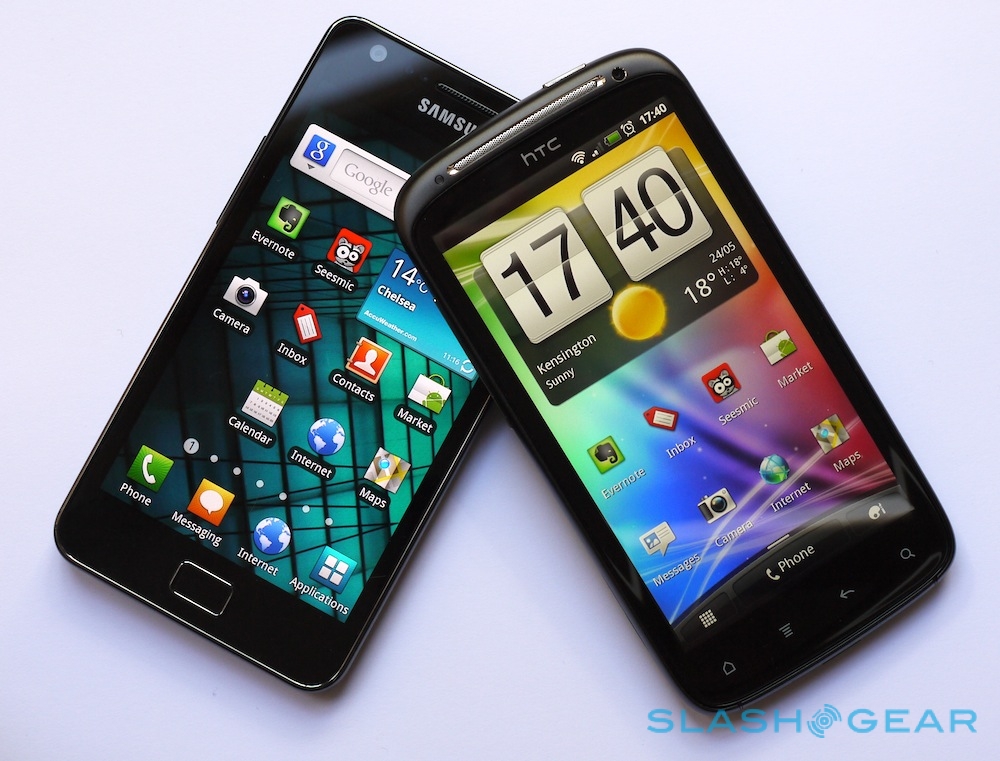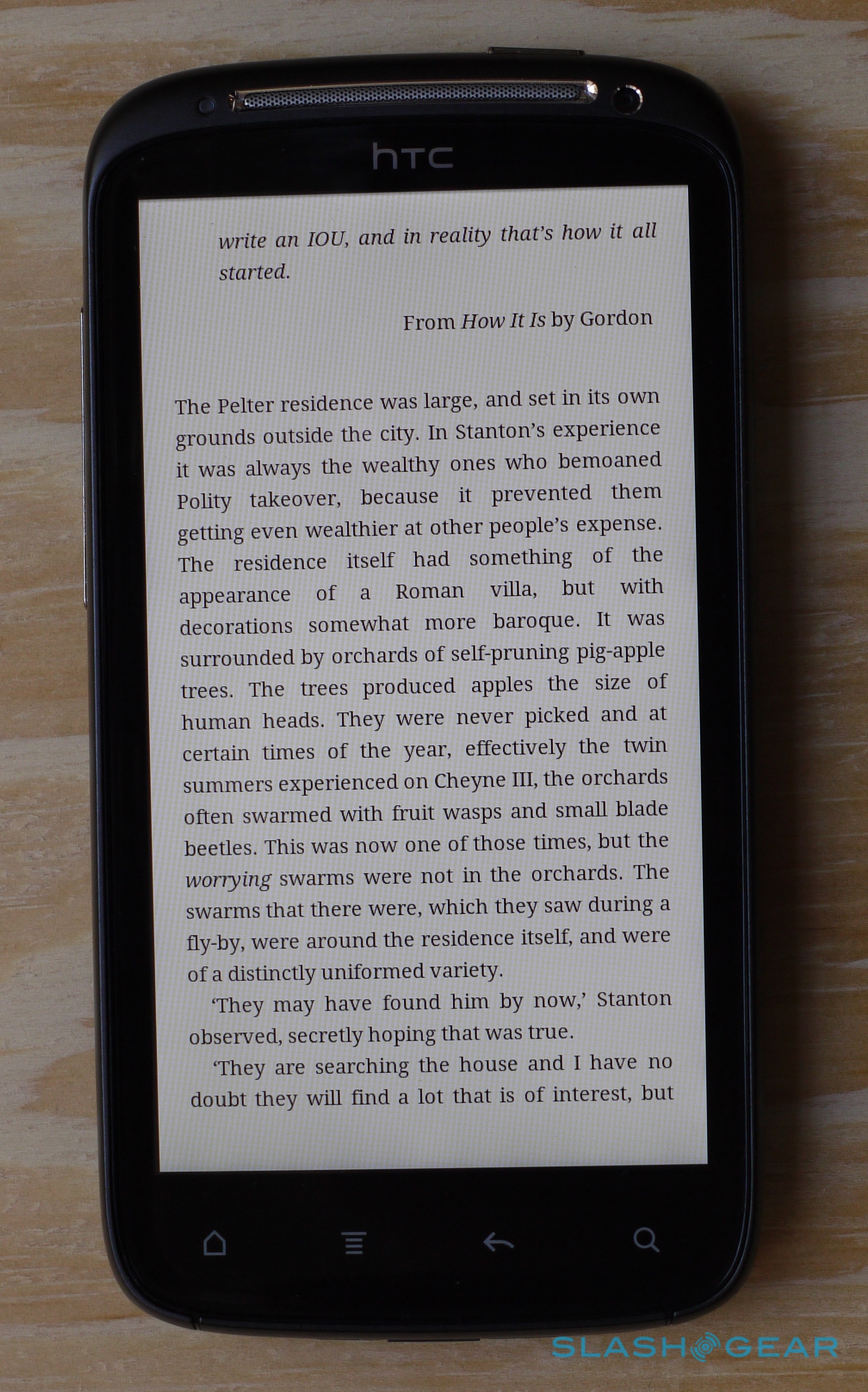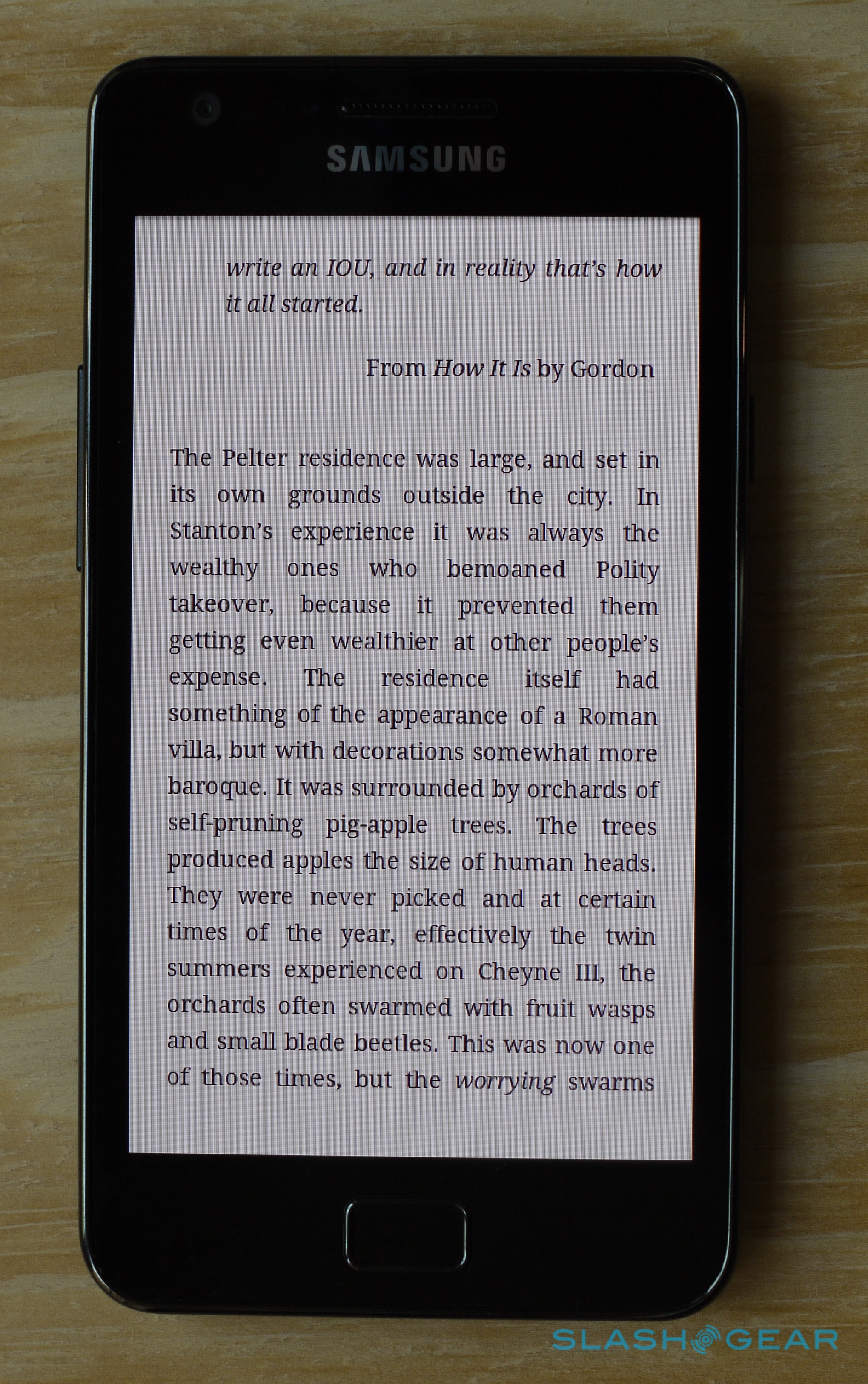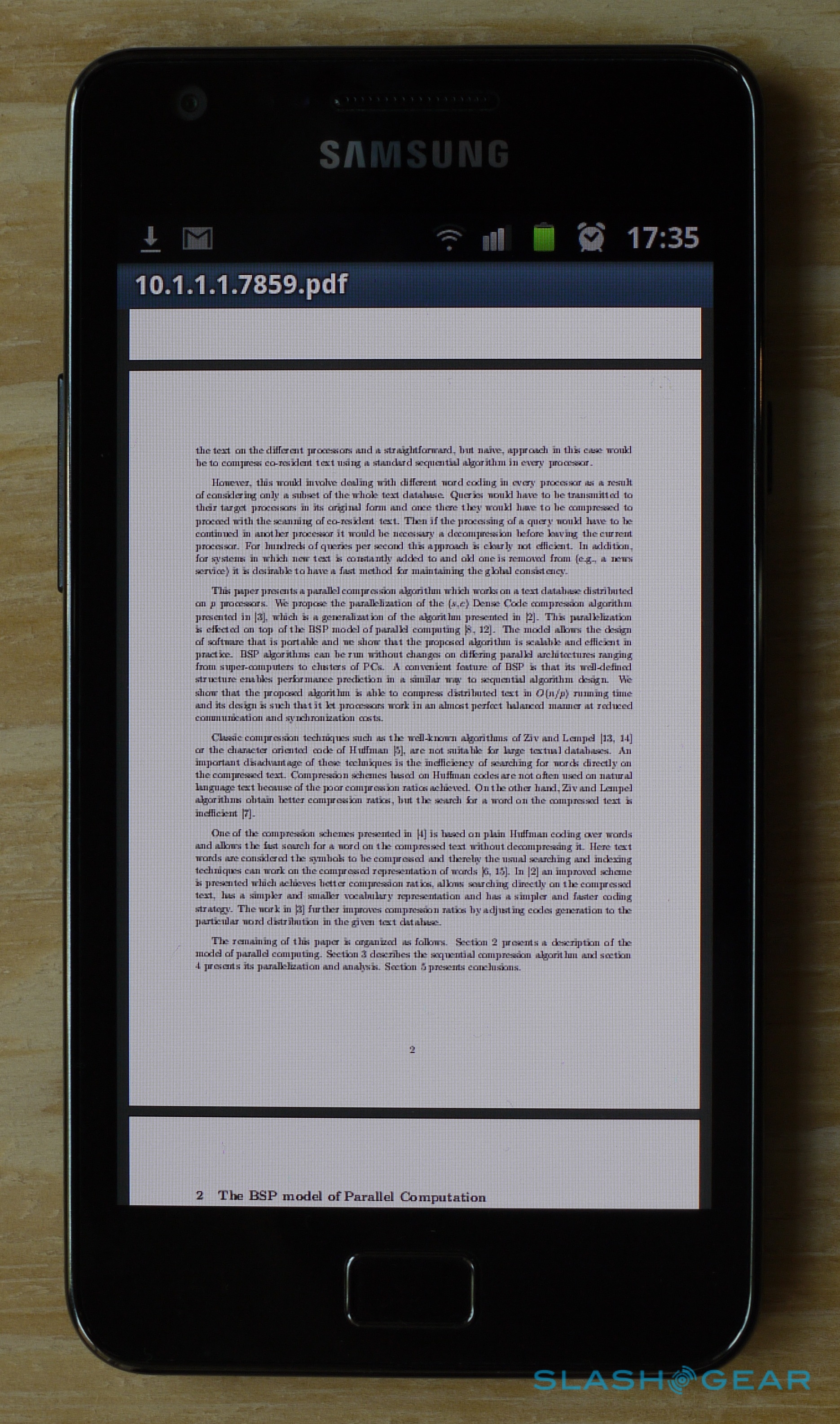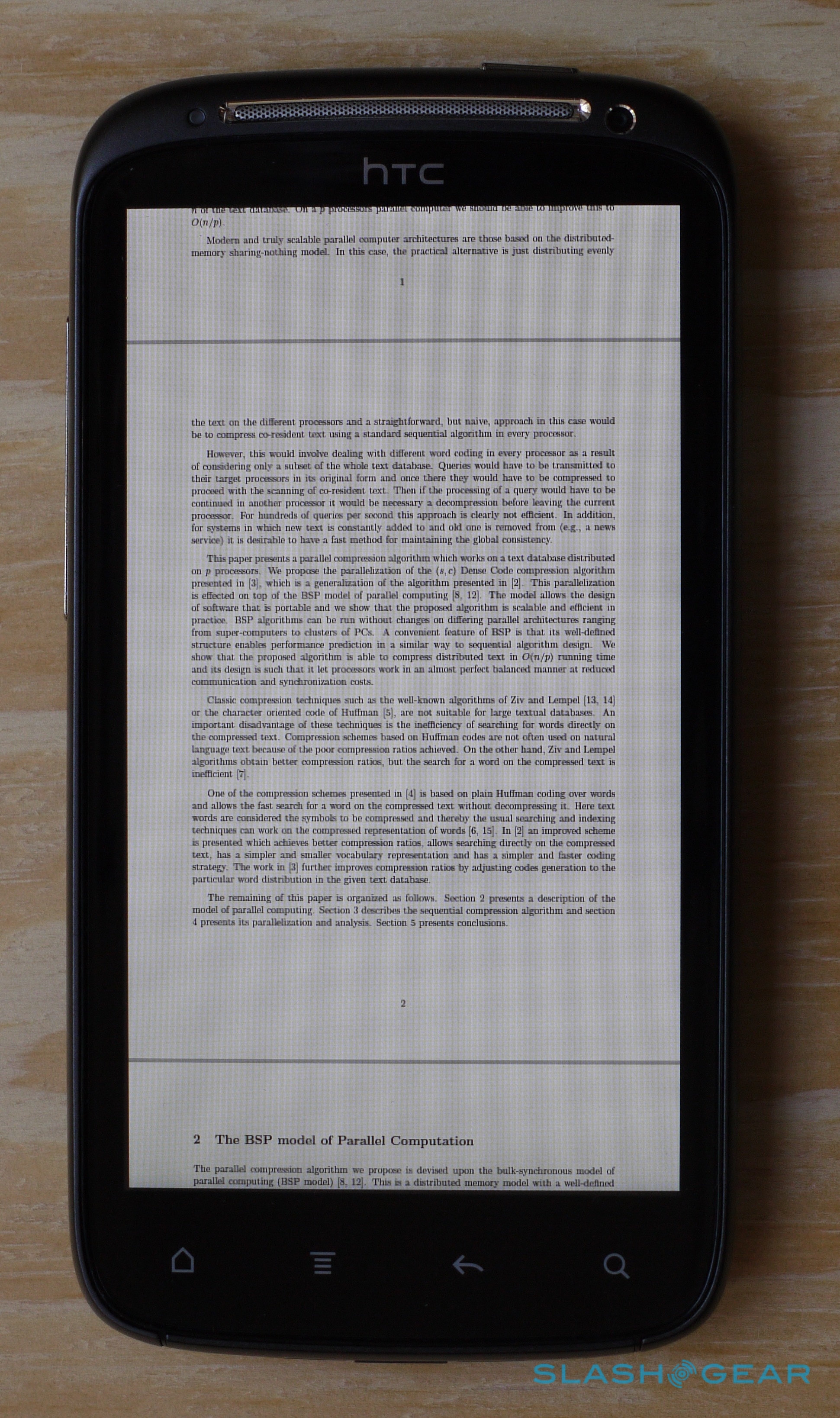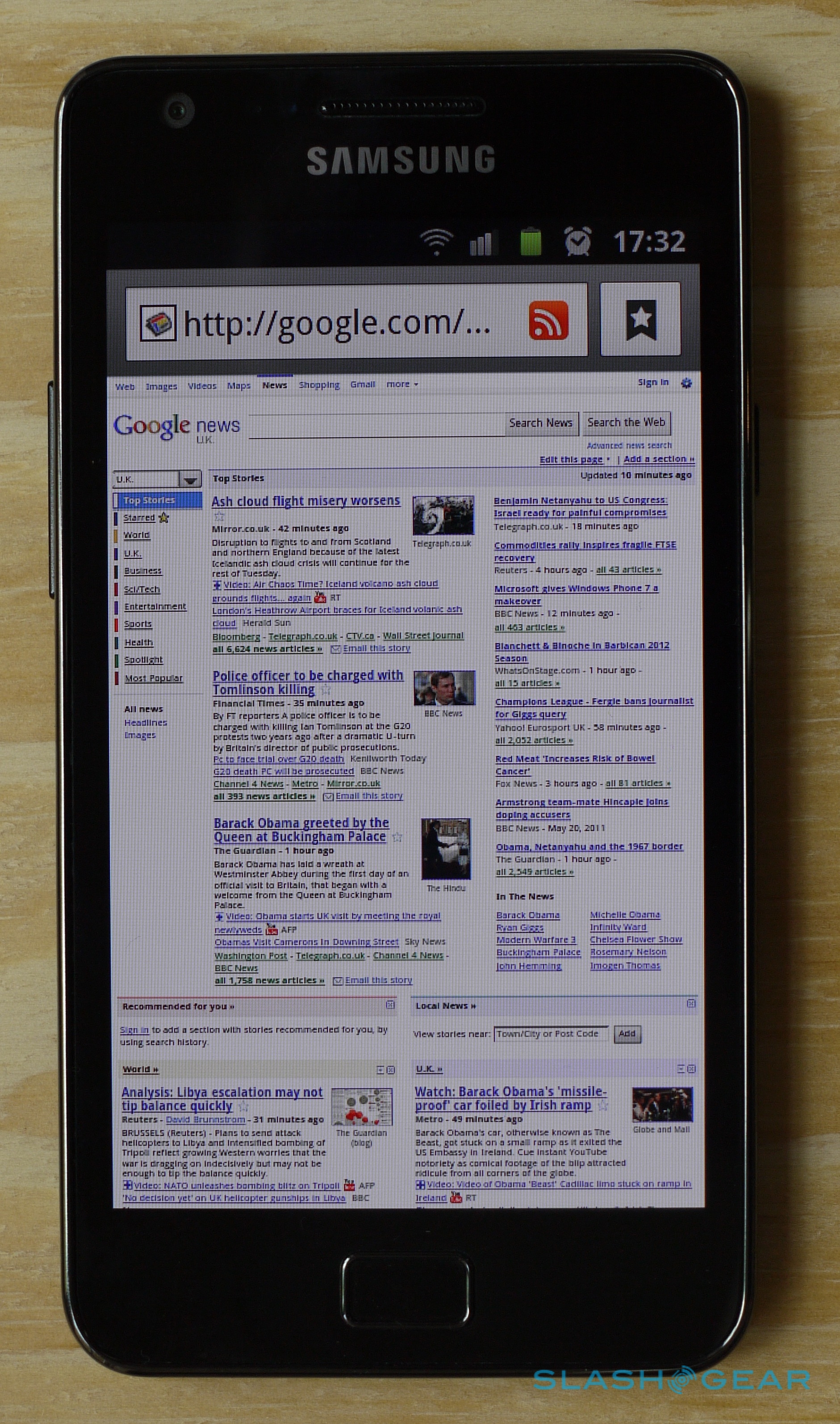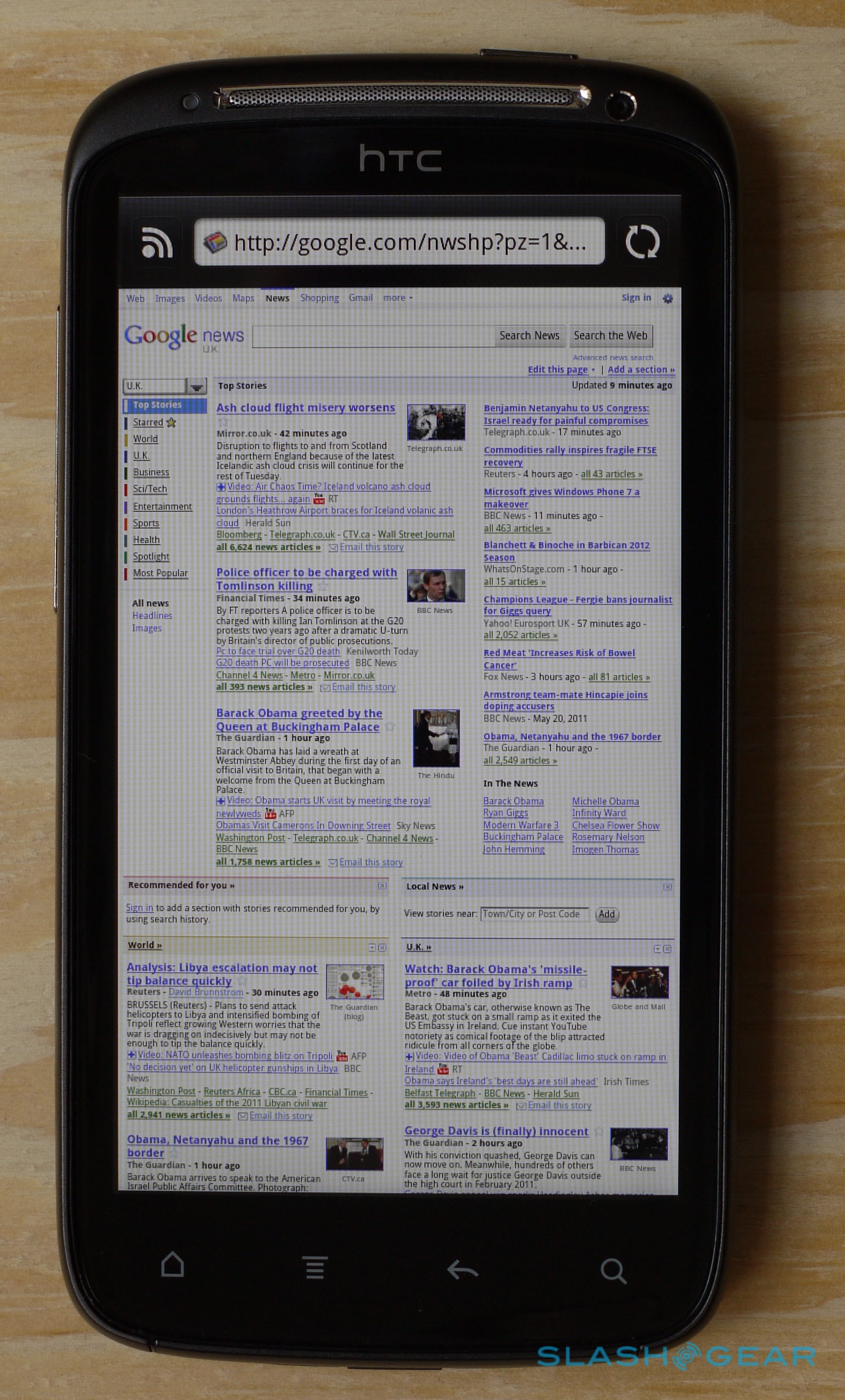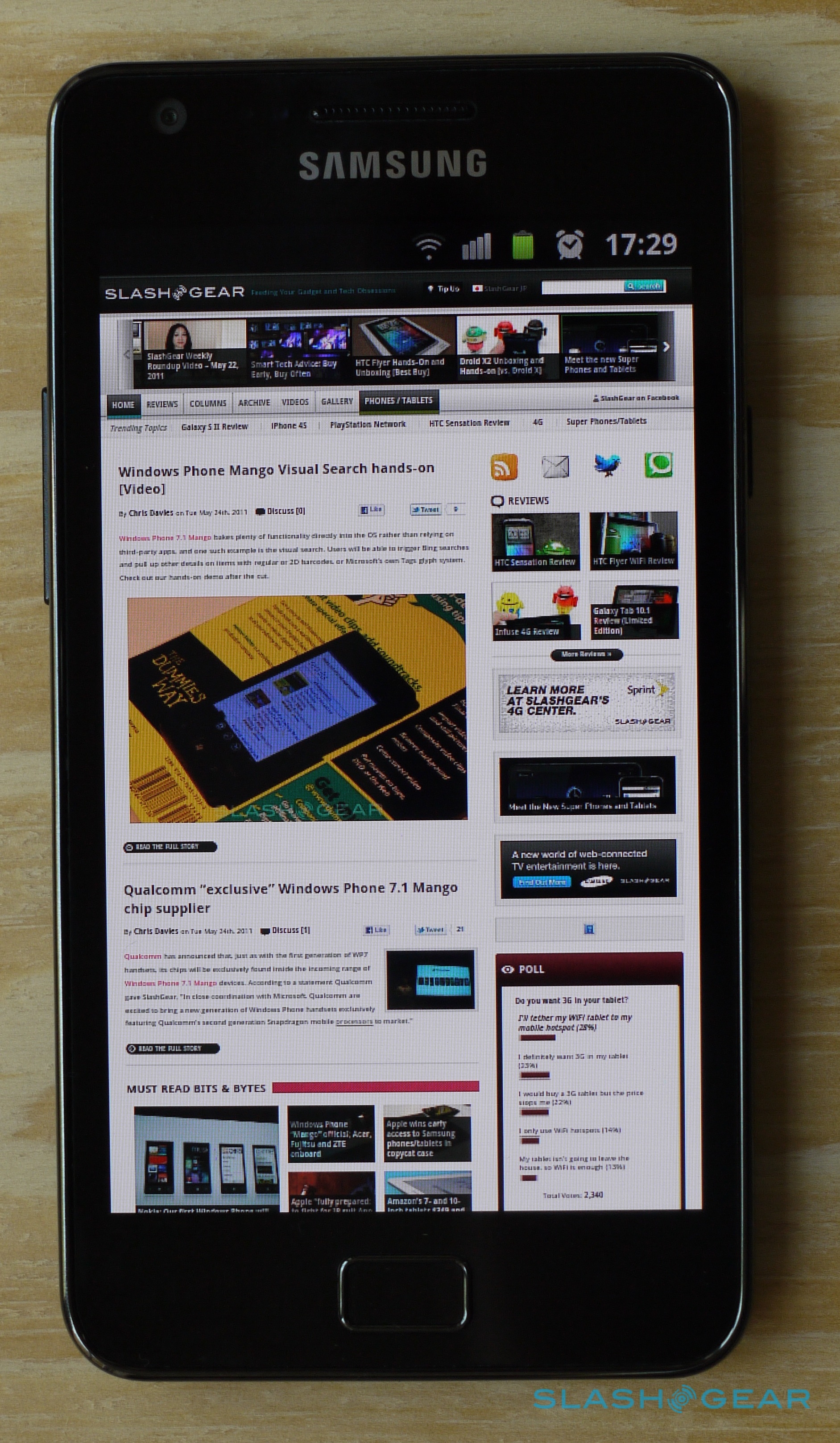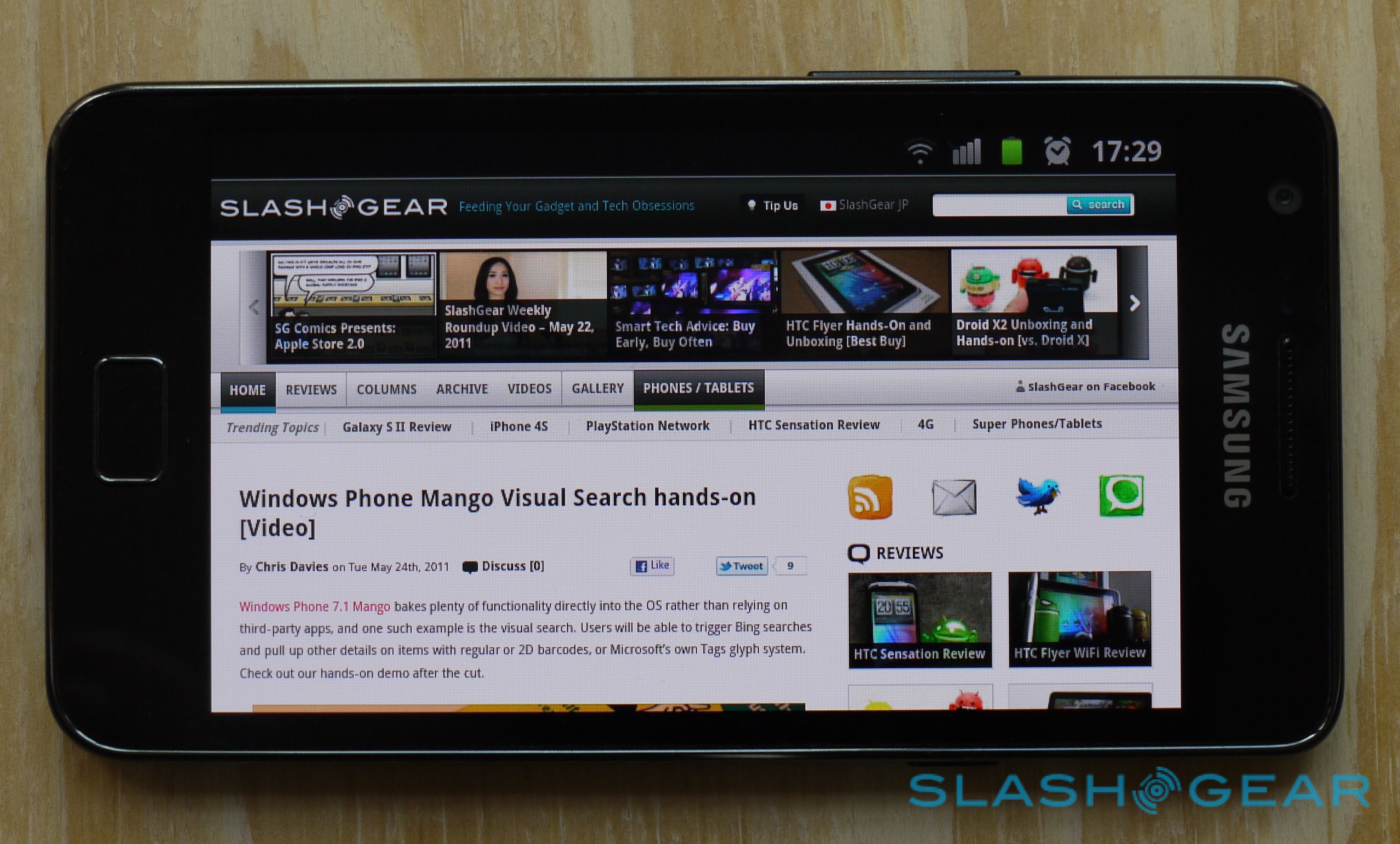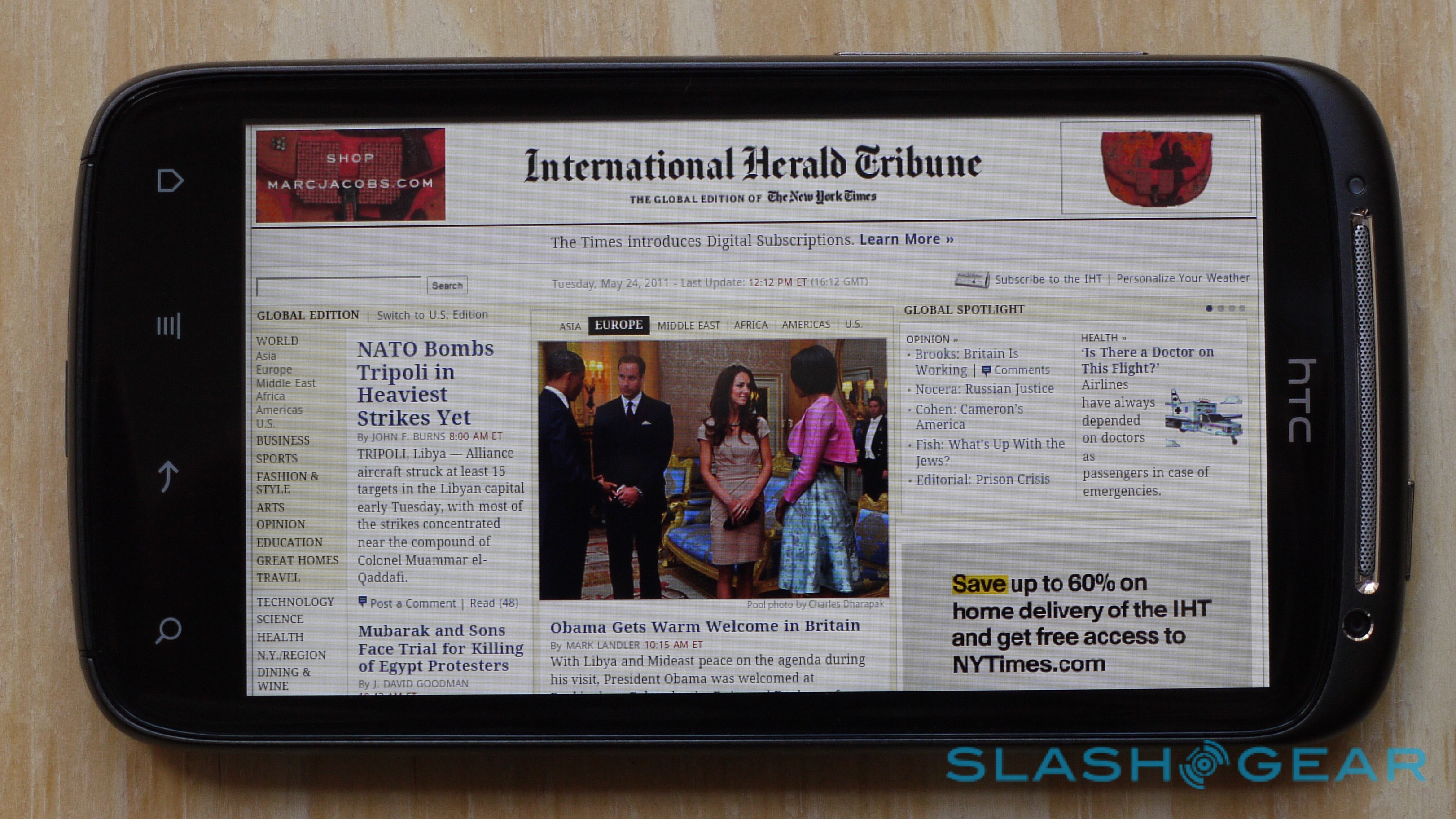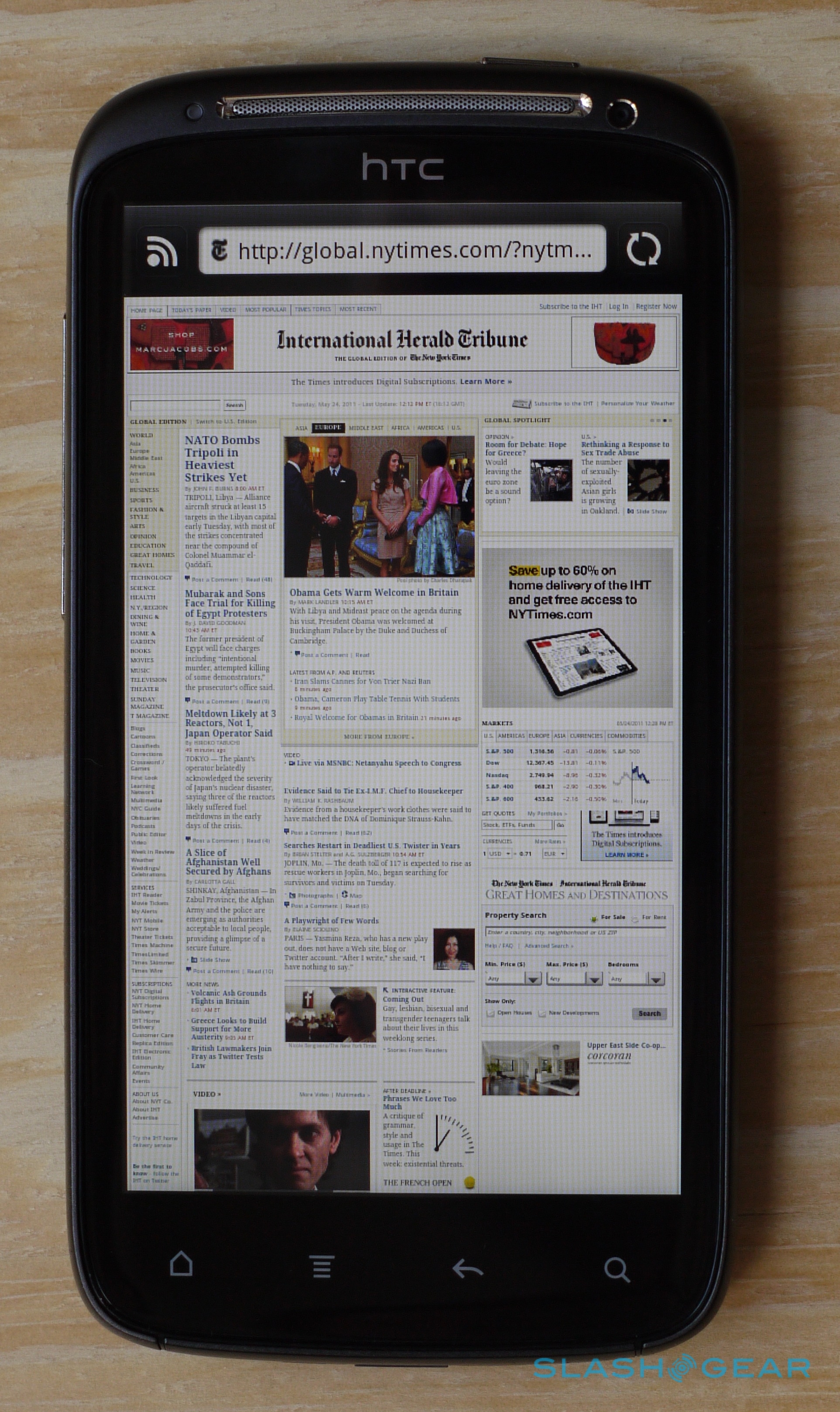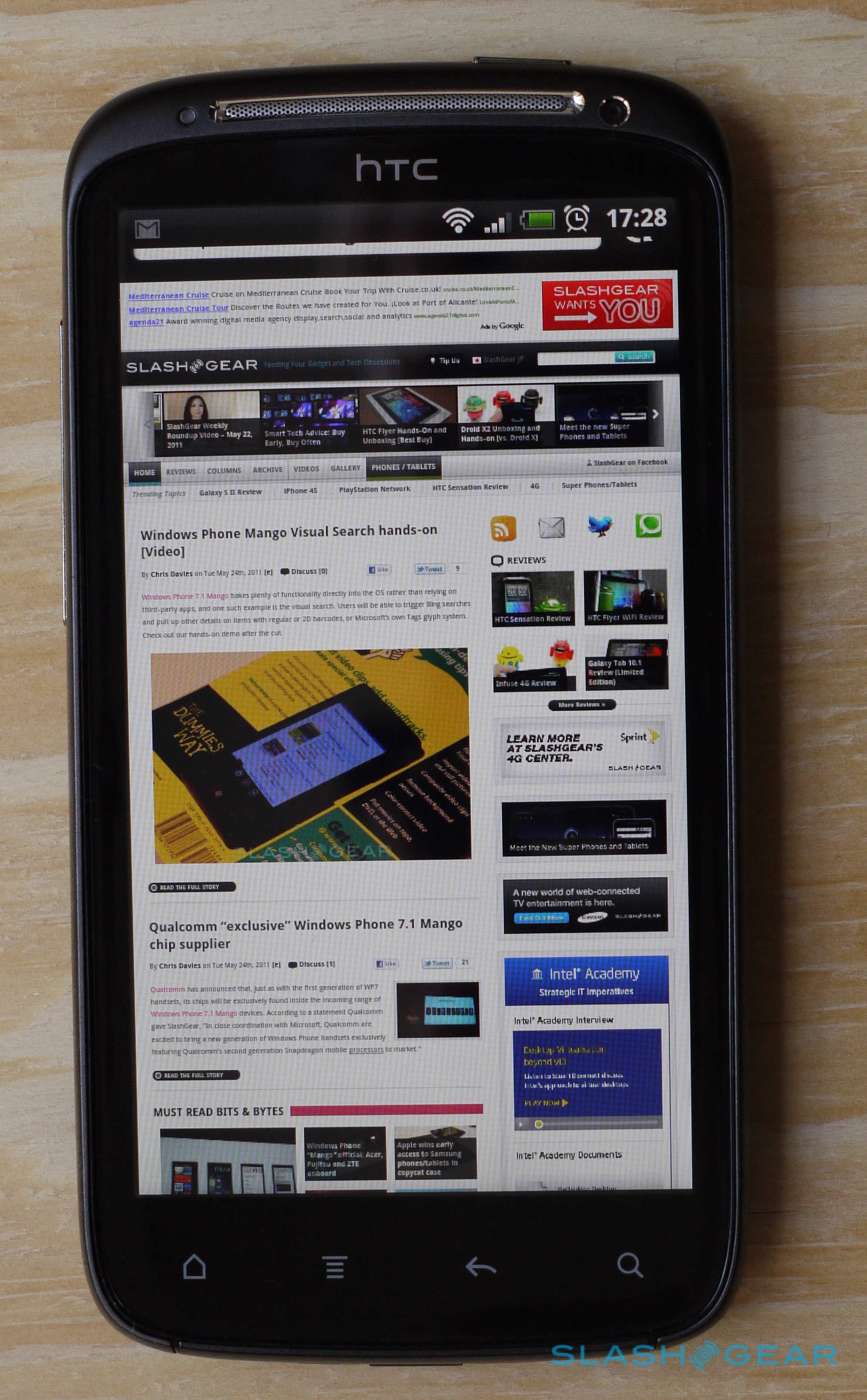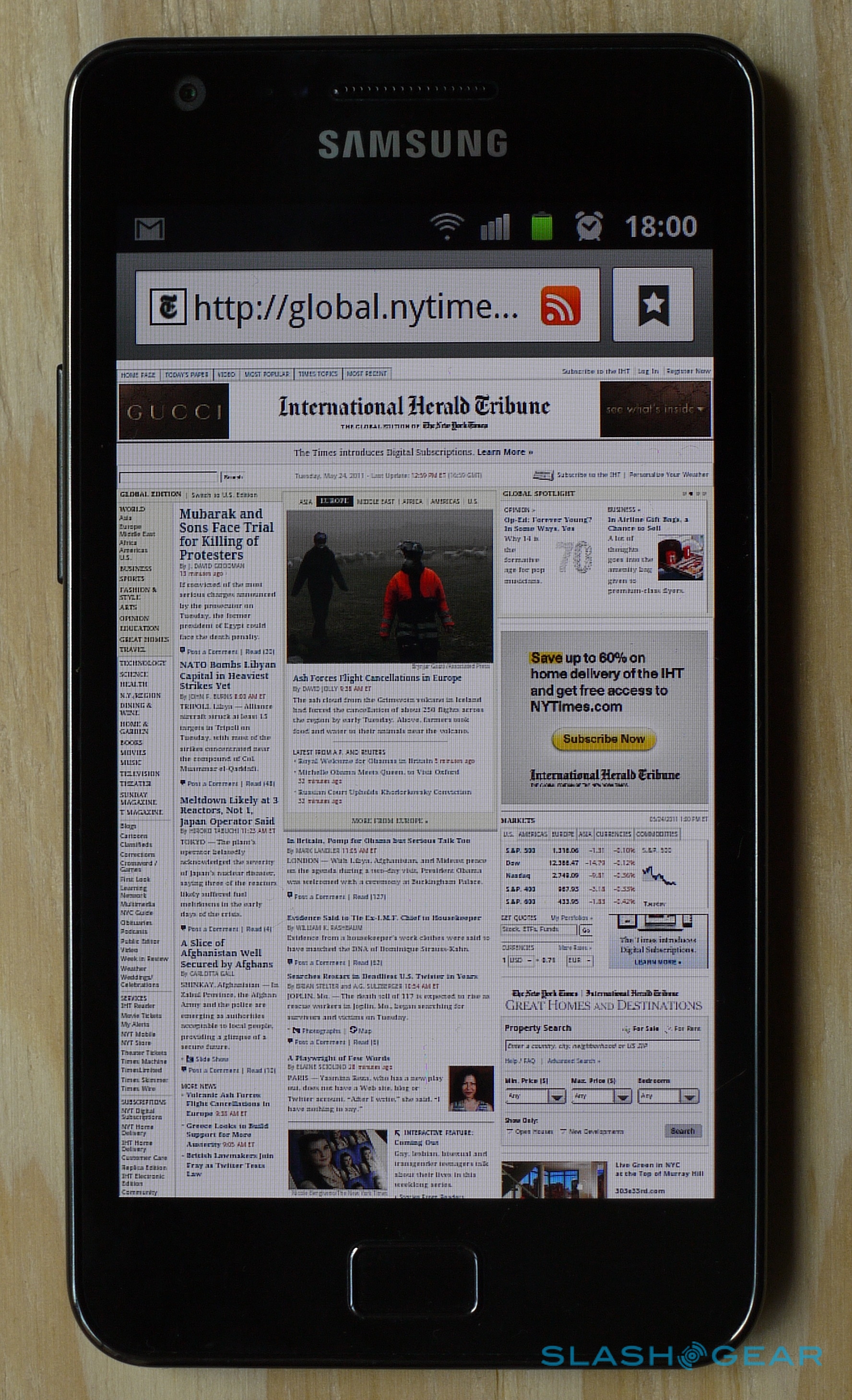Sensation Vs. Galaxy S II: Does qHD Make A Difference?
One of the lingering questions after our HTC Sensation review earlier this week was just how much of a difference the smartphone's qHD 960 x 540 resolution display makes over the regular crop of WVGA 800x 480 phones. More pressingly, does Samsung's Super AMOLED Plus panel on the Galaxy S II, with its surfeit of sub-pixels, hold a candle to the Sensation. There's only one way to find out: some uber-high-resolution photos in a GSII/Sensation shoot out!
All of the photos in the gallery below are merely cropped and watermarked; they've otherwise come off our camera at full resolution. We kicked things off with the SlashGear homepage at its default (i.e. full-width) zoom level in the Android browser. Getting in close to the text shows that regular-sized letters on the Sensation's panel are far more easily read than on the GSII: you can make out the words on the Samsung, but it's easier on the HTC.
We then looked at the text-dense NYTimes.com frontpage. Here the Sensation extended its lead: on the qHD panel the article text is still readable, whereas much of the text on the Galaxy S II is bordering on illegible. There's also a fair amount more of the page visible in one go, which reduces panning and scrolling.
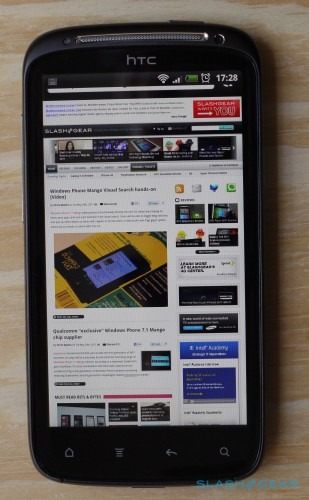
The Google News homepage is similarly legible, with the Sensation easy to read without having to pinch-zoom while the GSII demands some resizing to be comfortable. The Samsung screen is particularly blotchy around narrow letters, like "ill" clusters.
We then looked at document text, first in a downloaded PDF – viewed again at the default zoom to fit the width of the page on-screen – and then in a Kindle ebook at the smallest text size. The PDF's compact text proved jagged and sometimes blurred on the Galaxy S II, while less of the ebook was visible on-screen at any one time in the Kindle app. In contrast, the PDF, while still not perfect, was more legible, while Kindle text was smoother and more book-like to read.
As we said in our Galaxy S II review, the Super AMOLED Plus panel really comes into its own when playing video and games, where the brighter, richer colors and absence of blur make their impact known. Still, if you're more interested in browsing the web and ebook reading, qHD displays as on the HTC Sensation clearly have their advantages.
The full-sized shots are in the gallery below, or you can download the full 34MB ZIP file in one go via this link.

